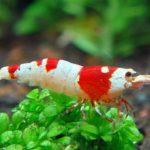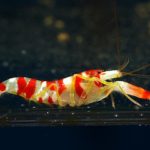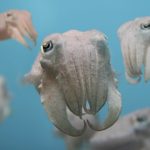Shrimps – information
 Shrimp is the most popular seafood in the US, but here’s what you should think about before ordering a shrimp in the restaurant: 90% of all shrimp that we eat are imported from abroad, but Less than 2% of them are tested by the appropriate authorities. So what’s the problem? Imported shrimp, more than any other kind of seafood, are prone to contamination with banned chemicals, pesticides and even cockroaches, and all this goes by the authorities’ attention, safely on your plate. The main reason for the danger of shrimp is the dirty conditions of their growing. That’s what it’s worth to know about them.
Shrimp is the most popular seafood in the US, but here’s what you should think about before ordering a shrimp in the restaurant: 90% of all shrimp that we eat are imported from abroad, but Less than 2% of them are tested by the appropriate authorities. So what’s the problem? Imported shrimp, more than any other kind of seafood, are prone to contamination with banned chemicals, pesticides and even cockroaches, and all this goes by the authorities’ attention, safely on your plate. The main reason for the danger of shrimp is the dirty conditions of their growing. That’s what it’s worth to know about them.
Prohibited antibiotics are not the only “seasoning” for imported shrimp. Previous analyzes of this seafood revealed penicillin – this antibiotic, although legal, can cause allergic reactions in unsuspecting shrimp lovers. “Imported, farmed shrimps come with a whole baggage of contaminants: antibiotics, residual products of chemicals used to clean containers, unsanitary” additives “in the form of mouse and rat wool, insects,” says Marianne Coufon, director of the fishing program for the non-profit organization Food & Water Watch.
And this is not to mention the salmonella and E. coli, which were found in imported shrimp. Moreover, imported shrimp are so dirty that they make 26-35% of the total volume of imported seafood that are not allowed for sale due to poor sanitary condition.
The report, published in November 2012 in the Bloomberg magazine, described the truly horrendous details of the conditions in which shrimps are packed and transported. At one particular factory in Vietnam, journalists from this publication found that the floors of the packing department were covered with debris, over which buzz flies buzzed, and shrimp were kept at unsuitable temperatures.
Packed shrimp in the ice made from local tap water, which, by order of local authorities, must necessarily go through the process of boiling because of contamination with microbes (otherwise shrimp and those who eat them are at risk of being infected). According to Bloomberg, in 2007, inspectors from the US Food and Drug Administration (FDA) did not miss 1380 shipments of seafood from Vietnam due to contamination and the presence of salmonella.



























